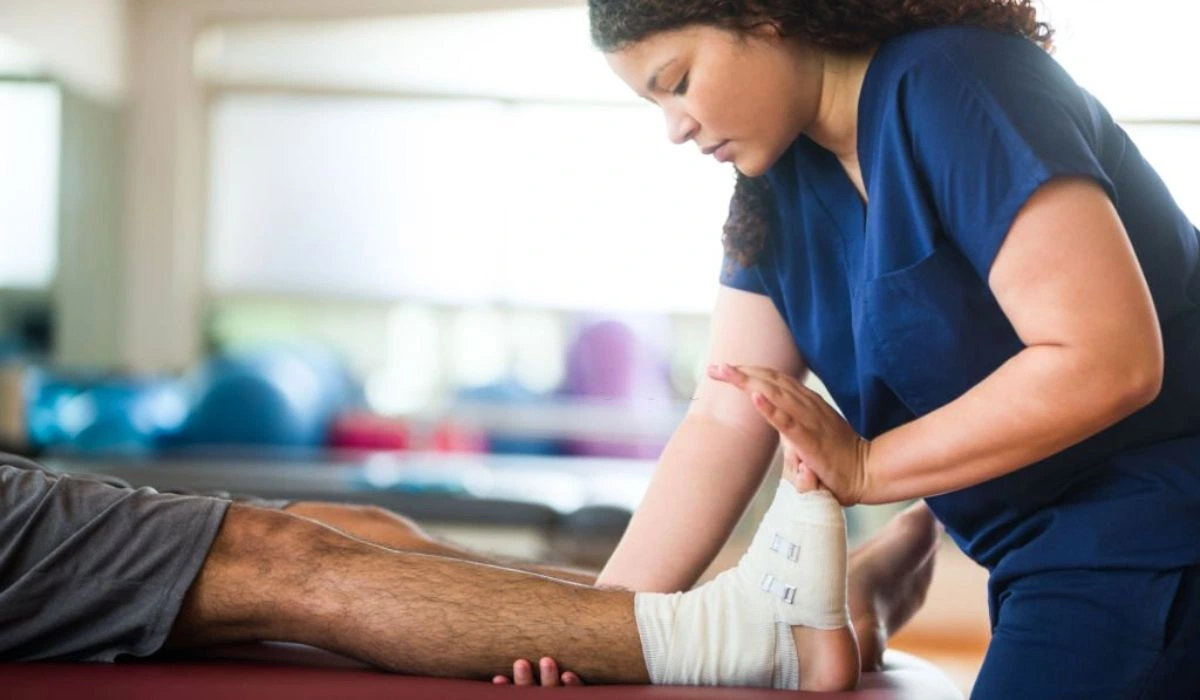Bones are hard and rigid structural members of our body. Without bones, we would be floating around like an amorphous blob. But we are not here to just stand straight. We need to walk, bend, and perform all kinds of movements for which the bones are too rigid. That’s where the ligaments come into the picture. Ligaments are fibrous bands of tissue that connect bones to bones.
They are made up of collagen fibers, a type of protein that is strong but flexible. Ligaments are a vital component of joints. They allow the bones to move freely through a wide range of motion around the joints.
They also provide stability to the joints, preventing the bones from moving too much around, which can cause dislocation. Ligaments also protect the bones and other tissues in the joints from shocks arising from movement.
About The Ankle Joint
The ankle is a complex joint that connects the feet to the legs. Three bones meet at the ankle joint: the calf bone, the shine bone, and the ankle bone. The ankle also contains three major sets of ligaments.
Together, they are responsible for movements of the feet, such as turning, bending, and pointing. These movements are essential for walking, running, and almost every other activity that involves the feet. For the same reason, ankle joints take a beating all the time, and these shocks are mostly absorbed by the ligaments.
Also Check: Gymnastics Injury Prevention And Recovery – Prevention Methods!
What Is An Ankle Sprain?
An ankle sprain is an injury from a stretched or torn ligament at the ankle. It can be caused by the movement of the ankle beyond its normal range of motion, such as twisting the ankle inward.
It can also happen due to moving the ankle in the wrong direction, like landing awkwardly after a jump. Ankle sprains can occur while playing sports, walking or running on uneven surfaces, being stepped on by another person, etc.
By design, ligaments have a poor blood supply, making it difficult for them to receive nutrients and oxygen for proper healing. Furthermore, collagen fibers, the building blocks of ligaments and tendons, heal slowly on their own.
Most ankle sprains are mild. A moderate or severe sprain can cause bruising, swelling, and pain while bending or rotating the ankle. Proper rest alone can heal mild sprains. If you have visible symptoms, medical treatment, assistive devices, physical therapy, or, in rare cases acute sprains, surgery may be required.
Rehabilitation
🔹 The R.I.C.E. Method
In the early stages, you can self-care for an ankle sprain with the RICE approach. It involves rest, ice, compression, and elevation. Allow enough rest for the injured ankle. This will prevent aggravating the existing condition and also give it time to heal on its own.
Applying an ice pack for 20 minutes at a time, every two to three hours, can relieve pain and reduce swelling. Compressing the ankle with an elastic bandage and keeping it above the level of the heart also stops swelling and inflammation.
🔹 Medication
Over-the-counter pain relievers like ibuprofen, naproxen sodium, or acetaminophen may be used for relief of pain from the sprained ankle.
🔹 Assistive Devices
If walking with the sprained ankle is too painful, you can consider using crutches until the pain subsides. It will also reduce the stress on the ankle joints, preventing further damage. A sports tape or ankle support brace can also achieve the same results in moderate cases. For severe sprains, a cast or walking boots may be necessary to stabilize the ankle.
🔹 Physical Therapy
Once the pain and swelling are out of the way, you can begin a series of exercises to restore your ankle’s strength and flexibility. These exercises focus on developing the strength of the muscles in your ankle and progressively enabling the full range of motion for the ligaments.
They will contribute to a faster recovery from the sprain. Some useful exercises that help heal ankle sprains include alphabet tracing, towel stretching, and resistance band exercises. You may want to consult a physical therapist to design a personalized training program for you that more closely matches your needs. Physical therapy also helps you prevent a recurring injury.
Read More: Injury Prevention Strategies For High-Impact Sports: Staying Injury-Free
Final Thoughts
The time taken for a sprained ankle to fully heal depends upon several factors, including the number of ligaments injured, the overall health, the age of the individual, etc. Avoid bad habits like smoking, which can interrupt the healing process.
Wear footwear that is the correct fit, and avoid walking or running on uneven or hard surfaces like asphalt. Make it a habit to warm up before performing physical activities, and always listen to your body to understand your limits. Pushing too hard during sports or other physical activity can cause a recurrence of a sprain.
